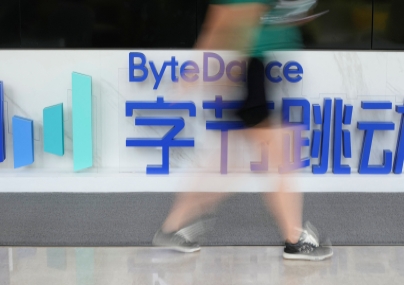
中国的创新水平正在不断发展,但如何让知识真正发挥资产价值?
近期国务院发布《关于完善科技成果评价机制的指导意见》,提出推广并探索知识价值信用贷款模式、知识产权质押融资,以及知识产权证券化。这些领域预期将成为律所未来的新业务增长点。
中国无疑已成为知识产权大国。根据国家知识产权局最新发布数据,2021年上半年中国知识产权保持稳定发展,前六个月共授权33.9万件发明专利,中国发明专利总数已超过332万件。
与此同时,拥有有效发明专利的国内企业达27万家,和去年相比增长了近10%。
不会有人怀疑:知识产权已经成为企业的重要资产。但在中国,想要让企业的“知产”真正变“资产”还存在诸多阻力。也因此,“十四五”规划明确将“完善金融支持科创体系”纳入其中。
“知识产权质押融资、知识产权证券化等领域预期将成为律所新的业务增长点。”
郑曦林、钟春宇,立方律师事务所
8月,国务院发布《关于完善科技成果评价机制的指导意见》,意见强调“充分发挥金融投资在科技成果评价中的作用”,同时提出“推广知识价值信用贷款模式,扩大知识产权质押融资规模……规范探索知识产权证券化”。
“《意见》的出台和目前中国社会转型以及国内外经济环境高度相关,改革开放发展到当下阶段,也产生了这样的必要性,尤其需要将大量科研院校的科技成果推向市场。”己任律师事务所合伙人杜晓宽律师如此解读《意见》产生的背景。
此外,“《意见》也建立于之前一系列关于科技成果转化的法律法规之上”,杜律师补充道,例如早期的《促进科技成果转化法》;近期《民法典》对于商标、专利、著作权可以转让出质的规定;相关部委及部分省市出台的一系列科技成果转化办法;甚至如“粤港澳大湾区发展纲要”“深圳建设中国社会主义先行示范区的意见”这类政策性文件中,也可见促进科技成果转化的专门条款。
而这一次的《意见》主要关注于科技成果的评价及定价过程,提出“分类建立不同评价体系,大力发展科技成果市场化评价,健全协议定价、挂牌交易、拍卖、资产评估等多元化科技成果市场交易定价模式”。

“评价非常重要,没有评价就不能确定价值,更难实现后期科技成果的真正转化。”
杜晓宽,己任律师事务所
“评价非常重要,没有评价就不能确定价值,更难实现后期科技成果的真正转化。”杜律师解释说。
而中国的知产评价体系并不完善。杜律师说,目前的知产评价主要由第三方资产评估机构做出,但由于“不像实物资产评估,知识产权评估特性非常强,评估机构往往很难给出符合市场价值的评估。基于这样的结果,银行等金融机构对知识产权融资‘惜贷’现象目前还很严重。
对此,立方律师事务所证券与资本市场团队合伙人郑曦林律师、律师钟春宇有着相同观察。“就知识产权质押融资而言,目前大多数银行、金融机构更倾向于融资方提供诸如土地、房产等能形成稳定还款来源的资产作为抵押担保。”他们补充道,“对于专利等无形资产的质押,尚须各方努力,以实现更高的市场接受度。”
更科学的评价
针对上述评价困局,“《意见》围绕科技成果的评价内容、主体、方法、评价后怎么用几个方面,完善、明确了科技成果评价机制,并对上述方面在细节上作出了具体指导”,杜晓宽律师说。
“例如在评价内容上,要从科学、技术、经济、社会、文化价值等几个角度进行全面评价。在此基础上还更加细化,例如社会评价角度,指出要重点评价在解决人民健康、国防与公共安全、生态环境等重大瓶颈问题方面的成效。”他说。
此外,在评价主体上,《意见》特别强调要“充分发挥金融投资在科技成果评价中的作用……引导相关金融机构、投资公司进行商业化评价……引导企业家、天使投资人、创业投资机构、专业化技术转移机构等各类市场主体提早介入研发活动”。
而目前,郑曦林、钟春宇律师指出,金融和投资机构不但参与相关评价较少,而且“基于相关技术、产品存在一定的研发周期,更早介入意味承担更大的失败风险,大多数投资机构主要集中在市场主体研发的中后期介入”,因此,“市场需要更多有耐心的长期资本参与早期投资”。
在他们看来,政府可以通过提出更多政策刺激投资者的早期参与,然而现实中,“地方政府对于此类风险较高的业态也存在顾虑”,因此“现在主导推进知识产权证券化业务的政府部门,主要集中在开发区这样对于风险有相当容忍度的政府机构”。
在杜晓宽律师看来,金融和投资机构之外,未来市场也应鼓励律师更多参与评价过程。
“目前已经有少量知识产权律师参与评价,但程度不深,只是对一些知识产权的法律状态、当下是否有效等做尽职调查,但很少对权利是否稳定、是否侵权等给予专业意见。”杜律师介绍说,“而不能确定专利是否侵权、是否会被他人撤销等,就会使技术价值很难真正体现出来。”
未来,伴随知产评价主体的愈发多元及活跃,杜律师指出监管也应提前厘清自身角色。“未来监管可能会集中在评估责任主体上,但即使是专业性评估,也不能保证百分百不会发生问题,相应是采取强监管,还是交由市场检验?”他说。
“毕竟知识产权评估不太可能实现完全意义上的科学性定价,尤其技术会不会因为局部科技发展导致提前折旧,这些问题都会出现。相应的监管也很难要求百分百事后追责。所以要有一个符合知识产权交易特性的适度监管制度,既不能把它扼杀在摇篮里,也不能过度放任。”他补充道。
交易尚不活跃
评价之外,此次《意见》也提到了促进知识产权交易发展,“加快建设现代化高水平技术交易市场。推动建立全国性知识产权和科技成果产权交易中心……规范探索知识产权证券化”。
谈到目前中国知产交易市场的情况,杜晓宽律师将其发展概括为“还不完善”:“有些城市建立了区域性交易市场,但交易量不足,信息透明度较低,造成企业不想去这些市场融资、转让,金融机构或资本方也不愿在这类市场上发现有价值的技术。”
不活跃的市场让潜在交易陷入困境。杜律师举了个例子,己任律师事务所有家外资企业客户,因为业务转型,需要将一块经营了数十年的业务单元分拆或关闭,客户在此领域有非常庞大的专利积累,“但这个专利包在中国的交易非常难以推进,因为没有一个统一的、全国性的交易中心,客户要在行业内通过中介、个人进行推介,无疑非常影响专利包交易效率,且市场价值也无法得到公允体现”。
在郑曦林、钟春宇律师看来,正是因为知产交易市场存在“因信息不对称造成需求方找不到成果,成果拥有方找不到市场;因知识产权价值不确定造成需求方买不起成果,成果拥有方无法给出合理定价”等问题,导致中国知识产权证券化发展也远不够广泛。
两位律师告诉ALB,目前中国尚未制定专门的知识产权证券化法律规章,相关规定散见于《专利法》、《商标法》、深交所和上交所相关指引,以及部分省市发布的文件中。
与此相对应,中国知产证券化市场的发展也尚属初期,但少数实践已经取得了不错的效果,例如“奇艺世纪知识产权供应链金融资产支持专项计划”在上交所成功发行后募资4.7亿元。“据统计,仅深圳一市2020年发行知识产权ABS产品总金额就达14.28亿元,专利质押金额达96.71亿元、商标质押金额5.86亿元。”两位律师说。
在他们看来,知产证券化拥有特殊的交易结构,拥有知识产权的创新型企业和投资人都可以从中获益:一方面,创新型企业可保有并管理知识产权,另一方面,知产证券化产品流动性较佳,其风险与报酬在股票和债券之间,因此可以作为投资人丰富资产组合的良好投资标的。
前景广阔
虽然现实与预想仍存在差距,但知识产权融资及证券化无疑是未来发展趋势,也将为法律服务带来更广阔市场。
“知识产权评估、交易、证券化,这些环节都需要律师事务所积极参与。”杜晓宽律师指出,“尤其是知识产权的权属风险和权利稳定性问题,在实际的知产融资过程中,这些法律相关风险会阻碍融资的顺利进行……从这几个领域,律师事务所是能在整个知识产权/科技成果转化或者定价评估上发挥非常大作用的。”
立方律师事务所对此有着相同观察。郑曦林、钟春宇律师告诉ALB,目前立方在相关领域已经“参与了多个交易,积累起一定的经验和人才”。未来,《意见》所提及的“知识产权质押融资、知识产权证券化等领域预期将成为我所新的业务增长点”。
“可以预期知识产权交易市场潜力巨大,绝对是一个蓝海。当市场蓬勃发展时,律师事务所作为参与主体之一,肯定也要加强投入。”杜晓宽律师坦言,“有些领域我们知识产权律师目前就可以参与进来,例如我们通常会建议客户做freedom to operate(FTO),即‘自由实施‘,将客户的技术方案进行全面检索,一方面这是对于自己专利情况的客观评价,未来它也会构成评价和交易的基础。”
CASH IN ON KNOWLEDGE
China is making great strides in innovation, but how can the nation truly bring out the value of knowledge as asset?
The State Council recently issued the Guiding Opinions on Improving the Evaluation Mechanism of Scientific and Technological Achievements, which aim to explore credit lending based on the value of innovations, and financing against pledges of IPs and IP securitization, areas which are expected to become new growth hotspots for law firms.
China has undoubtedly become an intellectual property powerhouse. A total of 339,000 invention patents were authorized in the first six months of 2021, the China National Intellectual Property Administration revealed. By the end of June, the number of valid invention patents from China had reached 3.324 million.
Meanwhile, the number of domestic enterprises with valid invention patents reached 270,000 by the end of June.
IP has become an indisputably important asset of enterprises. However, many obstacles remain in China when it comes to monetize IP as capital assets. In response, the national "14th Five-Year Plan" has explicitly included in its scope the task of "improving financial support for scientific and technological innovation.”
In August, the State Council issued the Guiding Opinions on Improving the Evaluation Mechanism of Scientific and Technological Achievements, emphasizing the need to "fully display the role of financial investment in the evaluation of scientific and technological achievements,” and putting forward requirements to "roll out credit lending based on knowledge value, increase the amount of financing against IPs pledged…, and explore IP securitization in a standardized manner.”
"The promulgation of the Opinions is closely related to the current social transformation in China and the economic environment both at home and abroad. It is inevitable given that reform and opening up has reached the current stage," says Simon Du, a partner at Gen Law Firm. "the Opinions are also based on a series of prior laws and regulations on the conversion of scientific and technological achievements."
Examples of such laws and regulations include the Law on Promoting the Conversion of Scientific and Technological Achievements in the early days, recent provisions in the Civil Code that trademarks, patents and copyrights can be transferred and pledged, as well as a slew of measures issued by relevant ministries and commissions as well as some provinces and cities.
The Opinions mainly focus on the evaluation and pricing of scientific and technological achievements, highlighting the importance of "establishing different evaluation systems according to different categories, vigorously developing market-oriented evaluation of scientific and technological achievements, and improving diversified market transaction and pricing models for such achievements, such as agreement-based pricing, listing and transaction, auction, asset valuation, etc."
"Evaluation is crucial. Without evaluation, value cannot be determined, making it even harder to truly convert scientific and technological achievements subsequently."
Simon Du, Gen Law Firm
"Evaluation is crucial. Without evaluation, value cannot be determined, making it even harder to truly convert scientific and technological achievements subsequently," Du explains.
However, China's IP evaluation system leaves much to be desired. According to Du, IP evaluation is presently mainly performed by third-party asset appraisal agencies. "Unlike the evaluation of physical assists, IP evaluation has unique characteristics, making it often difficult for appraisal agencies to give an assessment that meets market value. As a result, banks and other financial institutions are still very reluctant to extend credit based on IP."

"IP pledge financing, IP securitization and other fields mentioned in the Opinions are expected to become new business growth points.”
Zheng Xilin, Zhong Chunyu, Lifang & Partners
Zheng Xilin, a partner atLifang & Partners, and his colleague, Zhong Chunyu, share the same view. "As far as IP pledge financing is concerned, most banks and financial institutions are currently more inclined to require borrowers to provide land, real estate and other assets that can generate stable sources of repayment as mortgage collaterals," they note.
MORE SCIENTIFIC EVALUATION
In response to the above dilemma, "the Opinions have improved and clarified the evaluation mechanism for scientific and technological achievements by focusing on the aspects, parties and methods of evaluation as well as how to apply evaluation results, and has provided concrete guidance in detail," comments Du. "For example, evaluation should be comprehensive and cover areas such as science, technology, economy, society, cultural value, etc..”
In addition, as to the players involved in evaluation, the Opinions place particular emphasis on the need to "give full play to the role of financial..., guide relevant financial institutions and investment companies to conduct commercial evaluation..., and guide entrepreneurs, angel investors, venture capital firms, specialized technology transfer institutions and various market players to participate in R&D activities early.”
Zheng and Zhong point out that at present, financial and investment institutions are not only less involved in evaluation, but they also mainly “get involved only in the mid-to-late stages of the R&D activities of market players since earlier involvement means greater risks of failure given the R&D cycles of technologies and products.”
They believe that governments could nudge investors to participate early with more policy incentives. In reality, however, "local governments are also wary about this type of high-risk business,” and as a result, "government departments leading IP securitization are mainly those in economic development zones that have a considerable tolerance for risks.”
In Du's view, apart from financial and investment institutions, the market should also encourage lawyers to participate more actively in the evaluation process.
"At present, a small number of IP lawyers are already involved in evaluation but only to a limited extent, and they rarely give professional opinions on whether the rights are stable or constitute infringement," Du explains. "However, the inability to determine whether a patent is infringing or whether it will be revoked by others makes it difficult to truly reflect the value of the technology."
As the players involved in IP evaluation become more diverse and active going forward, Du also points out the need for regulators to clarify their roles in advance. "In the future, regulation may focus on who bears liability for evaluation. Even with professional evaluation, there is no guarantee that problems will never occur. Should a problem occur, do we tighten regulation, or do we leave it to the market to sort it out?" he asks.
"After all, IP evaluation is unlikely to achieve scientific pricing in the full sense, and it is also difficult for regulatory actions to achieve 100 percent accountability. Therefore, there needs to be an appropriate regulatory system that is neither too tight nor too lax, one that is suitable for the characteristics of IP transactions," he adds.
NOT YET ACTIVE
Apart from evaluation, the Opinions also talk about promoting IP transactions by "accelerating the development of a modern and high-level technology transaction market, promoting the establishment of a national IP and scientific and technological achievement property rights transaction centre, and exploring IP securitization in a standardized manner.”
Du describes the status quo of China's IP transaction market as "leaving much to be desired.” "Some cities have established regional marketplaces, but both the transaction volume and the level of information transparency are low."
An inactive market throws a spanner in the works for potential transactions. Du gives an example: Because of business transformation, a foreign client of his firm needs to spin off or close down a business unit that has amassed a very large patent portfolio in this field. "However, it is extremely difficult to transact this patent portfolio in China due to the lack of a unified national transaction center. The client has to promote the portfolio through intermediaries and individuals in the industry, which undoubtedly affects patent portfolio transactions and makes it difficult to fairly reflect the market value of that portfolio."
According to Zheng and Zhong, it is precisely because of the many problems in the IP transaction market that China's IP securitization also lags far behind in development.
They share with ALB that China has not yet formulated specialized laws and regulations on IP securitization. Relevant rules are scattered in the Patent Law, the Trademark Law, guidelines of the Shenzhen Stock Exchange and the Shanghai Stock Exchange, and documents issued by some provinces and cities.
Accordingly, the development of China's IP securitization market is still in its infancy, although some success has been achieved in practice. For example, the "Qiyi Century Intellectual Property Supply Chain Financial Asset-backed Special Plan" successfully raised 470 million yuan after being listed on the Shanghai Stock Exchange. "According to statistics, the total amount of IP ABS products issued in Shenzhen alone reached 1.428 billion yuan in 2020, and the amount of patent pledge and trademark pledge respectively stood at 9.671 billion yuan and 586 million yuan,” say Zheng and Zhong.
In their view, IP securitization has a special transaction structure, which benefits both innovation-oriented companies holding IPs and investors. On the one hand, these companies can retain and manage their IPs; on the other hand, IP securitization products have better liquidity and a risk-reward profile in-between stocks and bonds, making them ideal investment targets for investors to diversify their asset portfolios.
BRIGHT PROSPECT
Although the gap between reality and expectation remains, IP financing and securitization undoubtedly represent the future and will bring a broader market for legal services.
"IP evaluation, transaction and securitization all require the active participation of law firms," points out Du. "From these areas, firms can play a very big role in the entire process of conversion or pricing evaluation of IPs/scientific and technological achievements."
Zheng and Zhong concur. They share that their firm has already "participated in multiple transactions in relevant fields and had accumulated experiences and talents.” Looking ahead, "IP pledge financing, IP securitization and other fields mentioned in the Opinions are expected to become Lifang's new business growth points.”
"We feel that the IP transaction market has huge potential and is definitely a blue ocean. When the market is booming, law firms, as one of the players, definitely need to increase investment," comments Du. "In fact, there are some areas where we can get involved now. For example, we usually advise clients to practice freedom-to-operate (FTO) for their patents, that is, to conduct a comprehensive search of the clients' technical solutions. Such a search not only serves to assess and protect their own patents, but will also form the basis of evaluation and transaction in the future."
To contact the editorial team, please email ALBEditor@thomsonreuters.com.


